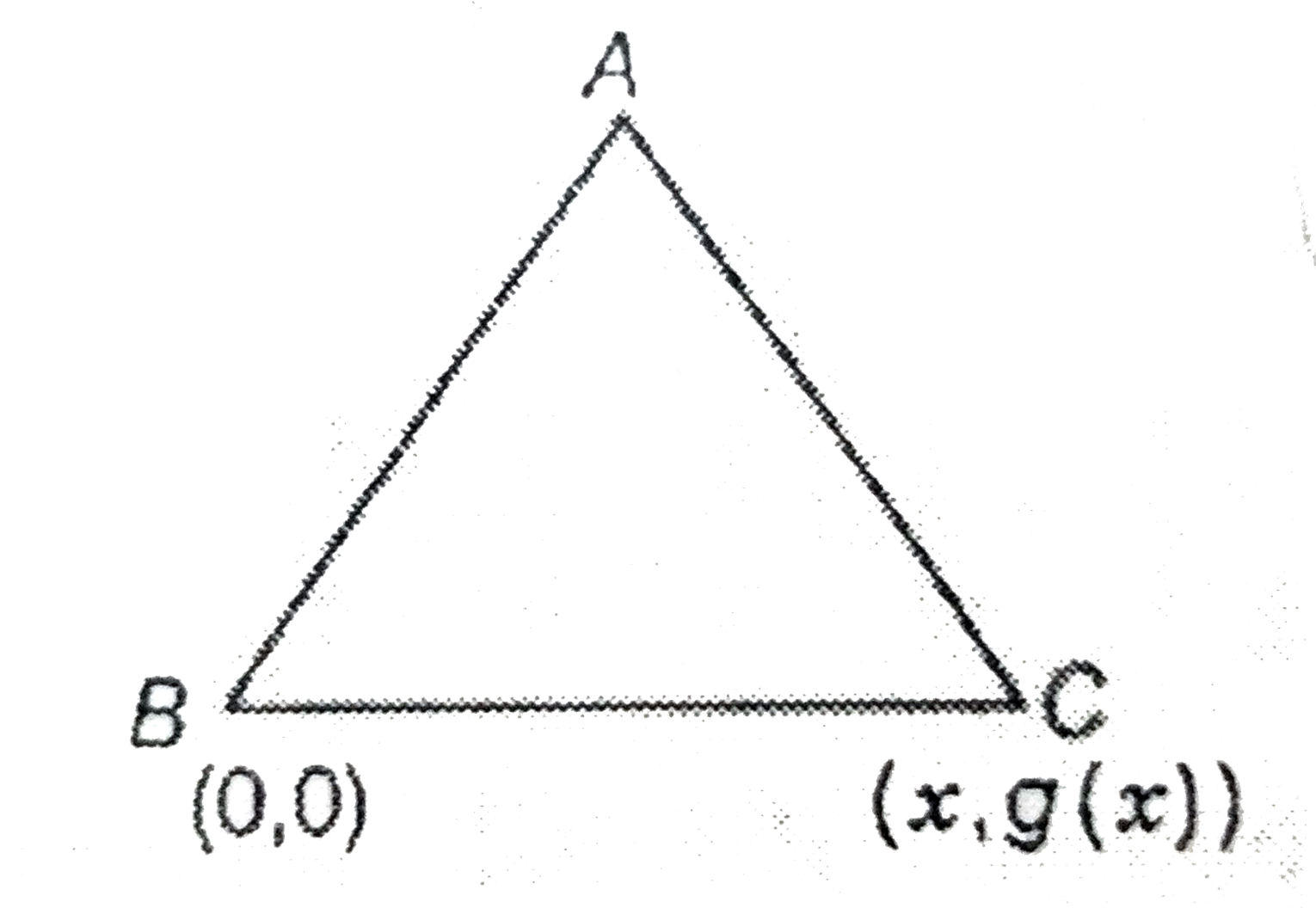Let g(x) be a function defined on[−1,1]. If the area of the equilateral triangle with two of its vertices at (0,0)and(x,g(x)) is √34 , then the function g(x) is g(x)=±√1−x2 g(x)=√1−x2 g(x)=−√1−x2 g(x)=√1+x2
A
g(x)=±√1−x2
B
g(x)=√1−x2
C
g(x)=−√1−x2
D
g(x)=√1+x2
Video Solution
Text Solution
The correct Answer is:B, C
Since, area of equilateral triangle =√34(BC)2
⇒√34=√34⋅[x2+g2(x)]⇒g2(x)=1−x2

⇒g(x)=√1−x2or−√1−x2
Hence, (b) and (c ) are correct options.
|
Topper's Solved these Questions
- FUNCTIONSBOOK - IIT JEE PREVIOUS YEARCHAPTER - FUNCTIONSEXERCISE - TYPES OF FUNCTION
19 Videos
- FUNCTIONSBOOK - IIT JEE PREVIOUS YEARCHAPTER - FUNCTIONSEXERCISE - INVERSE AND PERIODIC FUNCTIONS
11 Videos
- FUNCTIONSBOOK - IIT JEE PREVIOUS YEARCHAPTER - FUNCTIONSEXERCISE - INVERSE AND PERIODIC FUNCTIONS
11 Videos
- ELLIPSEBOOK - IIT JEE PREVIOUS YEARCHAPTER - ELLIPSEEXERCISE - EQUATION OF CHORD OF CONTACT, CHORD BISECTED AT A GIVEN POINT & DIAMETER
3 Videos
- HYPERBOLABOOK - IIT JEE PREVIOUS YEARCHAPTER - HYPERBOLAEXERCISE - EQUATION OF CHORD OF CONTACT,CHORD BISECTED DIAMETER,ASYMPTOTE AND RECTENGULAR HYPERBOLA
3 Videos
Similar Questions
Let g(x) be a function defined on [-1,1]. If the area of the equilateral triangle with two of its vertices at (0,0) and (x,g(x)) is √34.then the function g(x) is:
View SolutionLet g(x) be a function defined on[−1,1]. If the area of the equilateral triangle with two of its vertices at (0,0)a n d(x,g(x)) is (a)√34 , then the function g(x) is (b)g(x)=±√1−x2 (c)g(x)=√1−x2 (d)g(x)=−√1−x2 g(x)=√1+x2
View Solution
Knowledge Check
Let g(x) be a function defined on [-1,1]. If the area of the equilateral triangle with two of its vertices at (0,0) and (x,g(x)) is √34 , then the function g(x) , is
A±√1−x2B−√1−x2or√1−x2C√1−x2 onlyD√1+x2If g (x) be a function defined on [-1,1] . If the area of the equilateral triangle with two of its vertices at (0,0) and [x,g (x)]is √3/4 them the function is
Ag(x)=±√(1−x2)Bg(x)=−√(1−x2)Cg(x)=√(1−x2)Dg(x)=±√(1+x2)
f(x)=1|x|,g(x)=√x−2
View SolutionIf f(x)=x√1−x2,g(x)=x√1+x2 then (fog)(x)=
View SolutionIf the function, g(x)={k√x+1,0≤x≤3mx+2,3
View Solutionf(x)=√1−x2,g(x)=√1−x⋅√1+x . Identical functions or not?
View SolutionLet f(x)=1+√xandg(x)=2xx2+1 ,then
View SolutionSuppose that g(x)=1+√x and f(g(x))=3+2√x+x. Then find the function f(x).
View Solution
